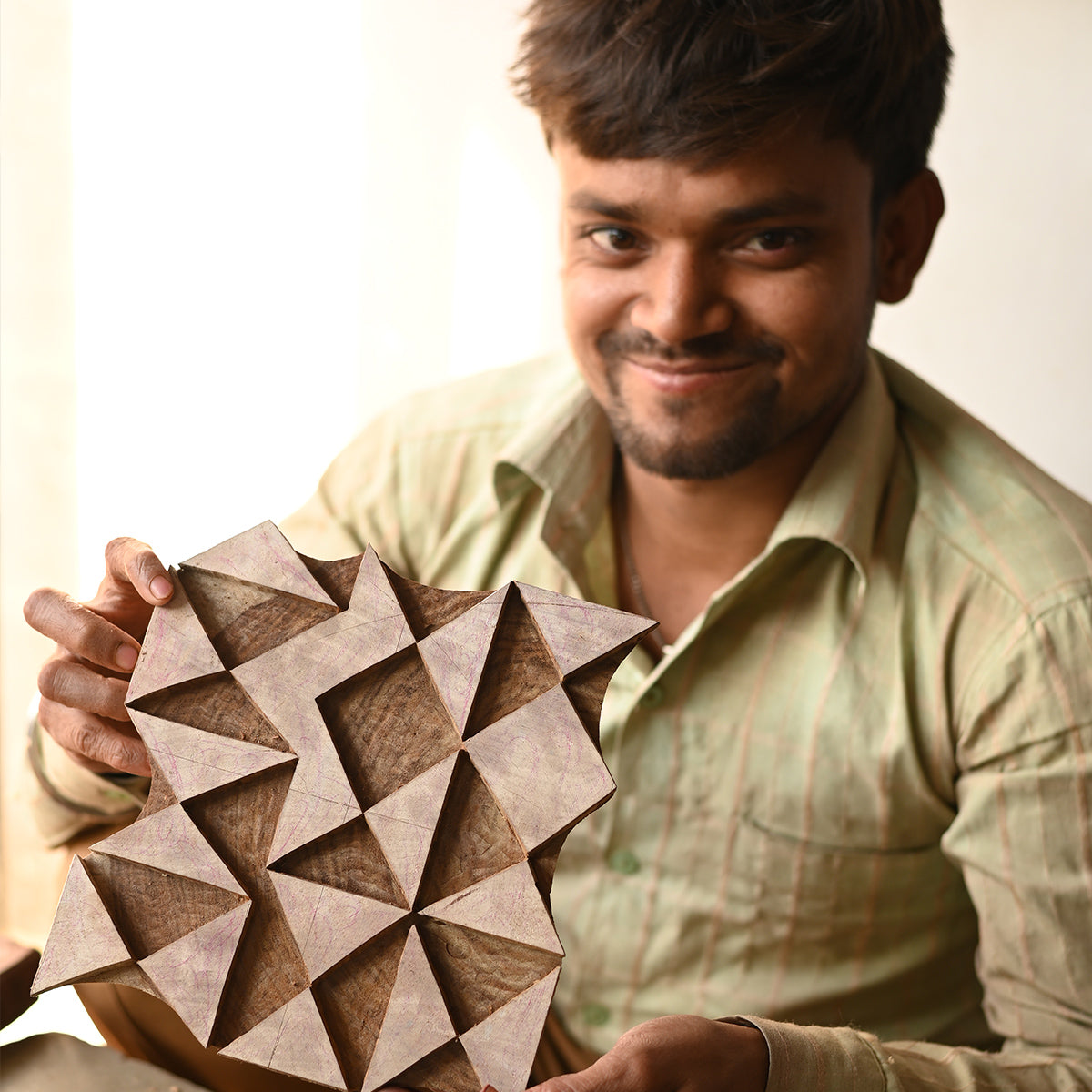
What is on a Charcuterie Board? | The Artisen
What is on a charcuterie board? You must have been to a friend’s wedding reception and seen the server walking around with a flat, oddly-shaped piece of wood with a bunch of meats and cheeses on top. Have you ever been to, say, a company’s luncheon and witnessed your co-workers’ hesitation to choose a food item? And when the server finally approached you and set the flat piece of wood before your eyes, did you recognize every meat and bread on its surface?

You’ve probably never asked yourself “What is on a charcuterie board?” but that’s most likely because you’ve never had to think about it until it was in front of your face, filled with a colorful array of food. What is commonly known as a “cheese board” or “party platter” has been around since the 15th century, originating in France where butcher shops used every part of the meat to sell to buyers. Often seen in social gatherings and events, charcuterie boards (pronounced “shar-koo-tr-ee”), whose name means “pork butcher’s shop,” have become popular today because they offer a variety of delicacies that differ in taste, texture, and consistency.
In this day and age, with the cultural dominance of social media, millennials, especially millennial influencers, have propelled the use of the charcuterie board with attractive images at restaurants, buffets, and at-home soirées. Its popularity continues to rise as more people become interested in travel and new experiences. They are convenient for get-togethers because they can feed a fair amount of guests from one dish. People are also becoming more health-conscious, so charcuterie boards prove useful to those who want to lead better lifestyles, as they tend to have food items that are low in calories, carbs, and fat.
So, to answer the simple yet complex question “What is on a charcuterie board?” here are just a few options that charcutiers make sure to include.
“Food can be very transformational, and it can be more than just about a dish. That’s what happened to me when I first went to France. I fell in love. And if you fall in love, well, then everything is easy.” - Alice Waters
What is on a Charcuterie Board?
- Meats
- Fruits
- Cheeses
- Bread Slices & Crackers
- Fruit Jams
- Olives & Nuts
Meats on a Charcuterie Board

A charcuterie board would not be a charcuterie board without its meats, as meat is the main food item on most plates. Cooks use an assortment of cured meats, some typical like salami, pepperoni, ham, and sausage, and other lesser-known choices like terrines, galantines, and ballotines. These pinkish-red colored meats are dried, salted, or smoked and usually cut in circles or folded into pockets.
Cured meat is the focus of a charcuterie board due to its savory taste and fillingness. It is a great source of protein and has a more tender feel to it than other meats. People who try the galantines for the first time express that it has a strong chicken flavor and is very moist, down to the center. Even salami, already salty pork, is said to permeate their mouths and greet their senses with a zesty pang.
Fruits

Charcuterie boards contain small fruit such as blackberries, raspberries, strawberries, cherries, and red and green grapes to add sweetness to all of that savor. To many, fruit is the most visually pleasing aspect of a charcuterie board due to its rainbow-like arrangement. Anyone who asks “What is on a charcuterie board?” will be glad to hear that their favorite fruit is more than likely available.
Depending on the board, the placement of fruit can either be tucked among other food items or miscellaneously spread throughout the entire plate. Split strawberries are placed in random spots, whereas clusters of succulent grapes and berries touch the meats, nuts, and bread. No matter the placing, though, nothing is more refreshing than popping a berry between your lips.
Cheeses

Next on the list is the oh-so-expected presence of cheese. Much like cured meat, cheese on a charcuterie board comes in many forms, including firm, soft, creamy, crumbly, and aged cheeses. Examples of firm cheese are cheddar, manchego, colby, and asiago, and soft cheese—stracchino, ricotta, and mascarpone. Aged-gouda, smooth Havarti, and powdery feta are all among the distinct food items.
If you want to know exactly “What is on a charcuterie board?” then you’ll need to be able to find it. The firm cheese is normally cut in slabs, leaning against each other like dominoes, and the soft cheese is often sliced like a pie. As for taste, eaters of the manchego and stracchino note that while manchego has an intense, rich flavor, stracchino is faint and mild.
Bread Slices and Crackers

Now for the “base” of a charcuterie board: Bread. The best charcuterie boards have bread that is not too strong in taste so as not to take away from the other food items. Some common bread choices are sourdough, ciabatta, and rye. With the addition of crackers, which tend to be regular water crackers but may also be brand-name, the charcuterie board is balanced in flavor.
Bread can be overlooked next to other charcuteries, but it definitely completes the board and is a great option for sensitive stomachs. And when paired with items like cheddar cheese and salami, it is sure to deliver. If you ever need to explain to someone who wonders “What is on a charcuterie board?” then be sure to mention the much-needed bread slices and crackers. They may not be the most alluring, but they certainly are the most dependable.
Jams

Jam is a delicious complement to an abundance of fruit. It can work as a dip to go with the strawberries or even a spread to eat with bread. On a charcuterie board, jam is almost always contained in a small bowl or in a glass jar. Lots of people enjoy fig jam, raspberry jam, strawberry jam, or grape jam with their fruit to counteract the saltiness of meat and cheese. It is a staple of every charcuterie board.
Of course, the jams of a charcuterie board taste similar to the fruit they derive from but are laced with a honeyed saccharinity that will leave you wanting more. Many would describe it as a “melt in your mouth” experience, something you can’t get from your everyday jelly and toast. So if you’re curious about “What is on a charcuterie board?” then the jam is the standout food item.
Olives and Nuts

Comparable to bread slices and crackers, olives and nuts also serve as an accessory to the more prominent-tasting delicacies. Charcuterie boards have both green and black olives, along with cerignola, luque, picholine, and kalamata as well as several nuts: walnuts, pecans, almonds, pistachios, and macadamia nuts. They are like ornaments on the plate, a decoration for eaters to indulge in.
Picholine olives are crisp and have a piquant flavor with a hint of fruitiness. Cerginola olives are oily in taste and are a tad bit sugary. The disparity of the nuts allows for a plethora of flavors, from the semi-sweetness of the almonds to the brininess of the pistachios. Charcuterie boards have these food items because they are not only delectable but also diverse.
Buy your Own Charcuterie Board!
Hopefully, the next time you’re standing at a social gathering and a server walks toward you with that misshaped piece of wood, you won’t have to think twice about the food you’ll reach for. You’ll see the vividly colored mass of food items and choose one or two based on your preferences. Charcuterie boards are filled with treats and tidbits, each unique in its flavor and appearance. They are designed to hold large amounts of food and act as a canvas on which the charcutier creates art. Though charcuterie boards were invented in France, they’ve become a culinary tool used around the world and will soon be incorporated into thousands of family kitchens.
If the question “What is on a charcuterie board?” still roams in your mind and begs to be heard, try to make one at home! They are easy to find and very inexpensive. Journey out and get your own charcuterie board and garnish it with whatever food you like. It does not matter what you put on it, just be creative and open to tasting new things. You can purchase a unique charcuterie board from The Artisen, handmade from teak wood and long-lasting.

Food is one of few things that introduce you to new traditions, making you go out of your comfort zone and into a realm of herbs and spices, recipes and heritages. If it weren’t for the innovative nature of people around the world, food would be bland and nothing would truly satisfy your hunger. It’s hard to imagine a society without the excitement of amazing food. It’s important to expose yourself to different culinary customs like the charcuterie board because doing so will further your understanding of human ingenuity and how people can find identity within making food. Don’t be intimidated by the countless food items on the surface, because surely there is one that will capture your attention and please your tastebuds.
Bon appétit!





